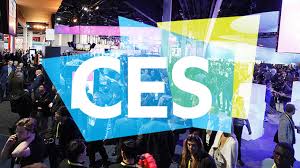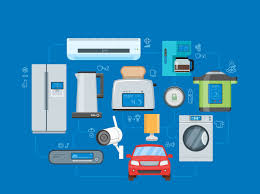 It’s a piloting world for new voice technology in senior living and care. But some senior living and service provider companies are experimenting and using for differentiation. As the Front Porch report and other examples have demonstrated, use of Voice First technologies can engage residents, improve concierge services, reduce unnecessary trips down long hallways for check-ins, enable some home automation actions for turning on lights, managing a thermostat or monitoring entrances.
It’s a piloting world for new voice technology in senior living and care. But some senior living and service provider companies are experimenting and using for differentiation. As the Front Porch report and other examples have demonstrated, use of Voice First technologies can engage residents, improve concierge services, reduce unnecessary trips down long hallways for check-ins, enable some home automation actions for turning on lights, managing a thermostat or monitoring entrances.
AARP Foundation and Senior Living. The AARP Foundation recently piloted a program with a senior living facility in the Baltimore area to test whether voice-controlled technologies like the Alexa-powered Amazon Echo can help curb isolation and its associated health effects in seniors. The organization worked with Comprehensive Housing Assistance, Inc., to place Amazon Echo devices in its senior living communities, teaching them how to communicate voice commands to Alexa for everything from turning the lights on and off, medication reminders, and getting news and weather reports. Learn more at Associated.org.
Amazon could take on Home Care. As Amazon looks to possibly capture some of the market share in the pharmacy space, home care providers are keeping watch on the company for other reasons. Coupled with its home-based voice technology, Amazon’s Echo product could easily be paired with home health and home care services to fulfill a number of responsibilities for seniors needing care. And some home care and home health providers are already actively exploring these options, including California-based Libertana Home Health, which tapped Amazon’s Alexa for a pilot study with some of its clients. Learn more at Libertana Home Health.Bottom of Form
Juniper Saves Money Retains Staff. Products like the Amazon Echo have already made their way into senior living settings, allowing residents to hear the dinner menu or get medication reminders simply by asking for them. But voice recognition also holds promise for making clinicians’ lives easier, while enabling senior living companies to cut costs and improve retention. least, Juniper Communities believes this to be true, based on initial results from a technology pilot with a startup called LexiconAI. Learn more at Juniper Communities.
HoneyCo Smart Home for Seniors. Stringing together an array of smart devices into a home is no easy task for even a moderately tech-savvy individual -- let alone someone enjoying their retirement. HoneyCo, based in Nashville, offers a one-stop shop for the smart home, taking products off the shelf and corralling them into a single, easy-to-use software platform. HoneyCo charges a monthly fee to manage the service. Learn more at HoneyCo Homes.
from Tips For Aging In Place https://www.ageinplacetech.com/blog/voice-first-and-voice-recognition-examples-senior-care
 Social isolation has grown for the older and/or less tech-savvy segments. This has been a result of tech replacements that are more difficult to use, whether it is the cost of Wi-Fi connection, excessive device screen sensitivity, screen size, the continuous need for OS upgrades or software updates, many of them security-related as hacker threats grow. Older adults and those who care about them examine this landscape and wonder what can be done because:
Social isolation has grown for the older and/or less tech-savvy segments. This has been a result of tech replacements that are more difficult to use, whether it is the cost of Wi-Fi connection, excessive device screen sensitivity, screen size, the continuous need for OS upgrades or software updates, many of them security-related as hacker threats grow. Older adults and those who care about them examine this landscape and wonder what can be done because: Tech with applicability in the older adult market. The Digital Health event is also covered
Tech with applicability in the older adult market. The Digital Health event is also covered  CES 2018 is off to a noisy, rainy and motion-filled start. The
CES 2018 is off to a noisy, rainy and motion-filled start. The  017 was an interesting year -- 2018 should overcome a few obstacles. Probably the most significant innovation during 2017 was the growth of the
017 was an interesting year -- 2018 should overcome a few obstacles. Probably the most significant innovation during 2017 was the growth of the